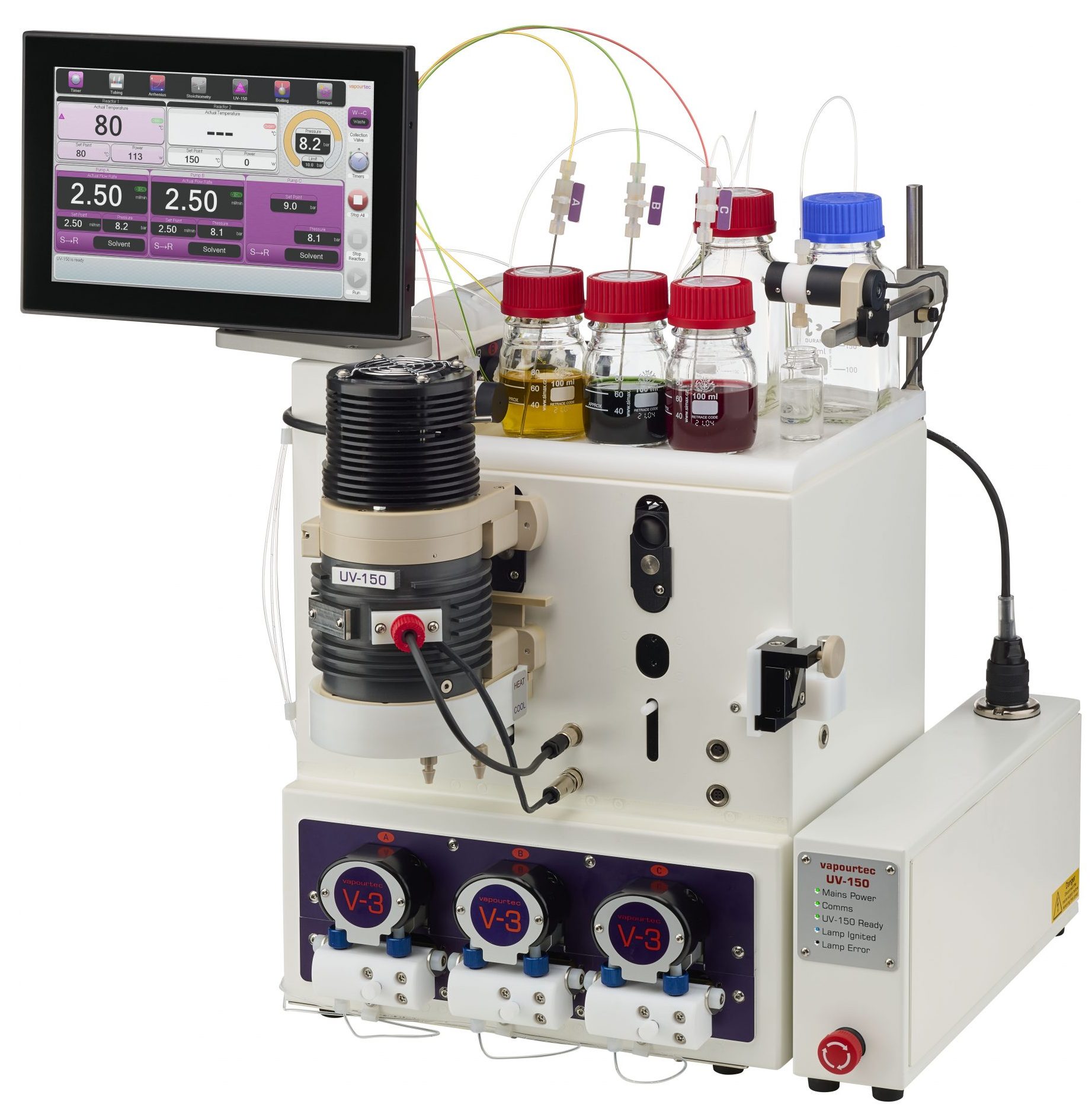
Date: 1 August 2025 | Category: News
New publication in Chemical Science
Bromine radical release from a nickel-complex facilitates the activation of alkyl boronic acids: a boron selective Suzuki–Miyaura cross coupling
Authors: Monica Oliva, Serena Pillitteri, Johannes Schörgenhumer, Riku Saito, Erik V. Van der Eycken and Upendra K. Sharma*
The uksresearchgroup.com at the University of Missouri-St. Louis in collaboration with researchers from the KU Leuven, University of Zurich, Ghent University and RUDN in Russia have published a photocatalysed Suzuki–Miyaura reaction, employing inactivated and easily accessible alkyl boronic acids. The reaction was initially optimized under batch conditions, then applied to continuous flow for scale-up using the Vapourtec easy-Photochem system, Figure 1 [1].
 Figure 1: Halogen radicals for a boron-selective activation with no external activators and in a flow-compatible manner. (Image adapted from reference [1]).
Figure 1: Halogen radicals for a boron-selective activation with no external activators and in a flow-compatible manner. (Image adapted from reference [1]).
Photoredox catalysis: a new frontier in chemical synthesis
The merging of nickel catalysis with single-electron transfer (SET) has revolutionised the way in which molecules can be synthesised. Owing to this methodology, the formation of C(sp2)–C(sp3) bonds can be achieved without stoichiometric quantities of strong oxidants or the use of high-energy light sources [1]. The Molander group recently revealed that nickel complexes can either undergo an energy transfer mechanism with a photocatalyst or be excited by visible light and cause further reactions downstream [2]. Key to the work from Molander is the homolysis of the Ni–Br bond and subsequent generation of bromine radicals under light, which can abstract hydrogen atoms from other species through hydrogen atom transfer (HAT). However, in this current publication a different pathway is elucidated, whereby bromine radicals can selectively activate alkyl boronic acids through a radical transfer interaction with the empty p-orbital on the boron atom, Figure 2.
Photocatalysed Suzuki–Miyaura in flow
In recent years, the use of flow chemistry has come to the fore for the formation of new, complex molecular structures [3]. In this work, the only alteration required for flow set-up was to switch Cs2CO3 for 1,1,3,3-tetramethylguanidine (TMG) to avoid blockages, which also meant that tetrabutylammonium bromide was no longer needed. A range of substrates were tolerated, both for the boronic acids and aryl component, and for the coupling partner, bromo arenes, aryl triflates and benzoyl chlorides could all be used. Scale-up was also facile, and on 1 mmol scale 100% conversion was observed, with a throughput of 157 mg h−1, Figure 3.
Summary
A novel photocatalysed Suzuki–Miyaura reaction using nickel has been disclosed, where both primary and secondary alkyl boronic acids can act as radical precursors for the formation of C(sp2)–C(sp3) bonds under mild reaction conditions. The use of flow chemistry, enabled by Vapourtec’s technology, resulted in fast and effective processing of material, with scale-up to 1 mmol enabling throughput of 157 mg h−1 with 100% conversion and no loss of yield.
References:
[1] Bromine radical release from a nickel-complex facilitates the activation of alkyl boronic acids: a boron selective Suzuki–Miyaura cross coupling. (M. Oliva, S. Pillitteri, J. Schörgenhumer, R. Saito, E. V. Van der Eycken, U. K. Sharma, Chem. Sci., 2024, 15, 17490). https://doi.org/10.1039/d4sc04196h
[2] Photochemical Nickel-Catalyzed C–H Arylation: Synthetic Scope and Mechanistic Investigations. (D. R. Heitz, J. C. Tellis and G. A. Molander, J. Am. Chem. Soc., 2016, 138, 12715–12718). https://doi.org/10.1021/jacs.6b04789
[3] Applications of Continuous-Flow Photochemistry in Organic Synthesis, Material Science, and Water Treatment. (D. Cambié, C. Bottecchia, N. J. W. Straathof, V. Hessel and T. Noël, Chem. Rev., 2016, 116, 10276–10341). https://doi.org/10.1021/acs.chemrev.5b00707

![HAT vs Halogen radical transfer concept (XRT) (Image adapted from reference [1]). Figure 2: HAT vs Halogen radical transfer concept (XRT) (Image adapted from reference [1]).](https://www.vapourtec.com/wp-content/uploads/2025/08/Figure-2-HAT-vs-Halogen-radical-transfer-concept-XRT-Image-adapted-from-reference-1.jpg)
